Delia Teschendorff Architecture

Delia Teschendorff Architecture has a rigorous design focus. The approach to each individual project is unique, as each brief, site and client demands a different approach and presents a different problem to solve. Research is an important component of the design process at DTA. A projects inspiration may be drawn from history, an investigation of site or broader influences including music and literature. Each project presents the opportunity to research materials and new construction methods, exploring the most cost effective and sustainable solutions. This approach ensures a unique experience of place for the user and the buildings position in the greater urban fabric.
Driving directions to Delia Teschendorff Architecture on map
Delia Teschendorff Architecture on Google Maps
Projects:
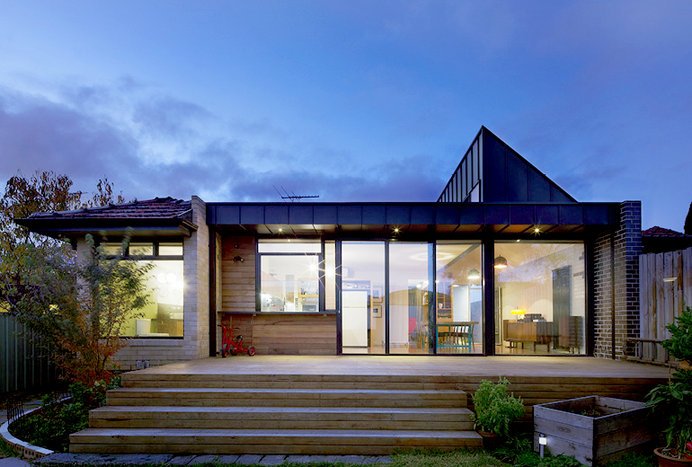

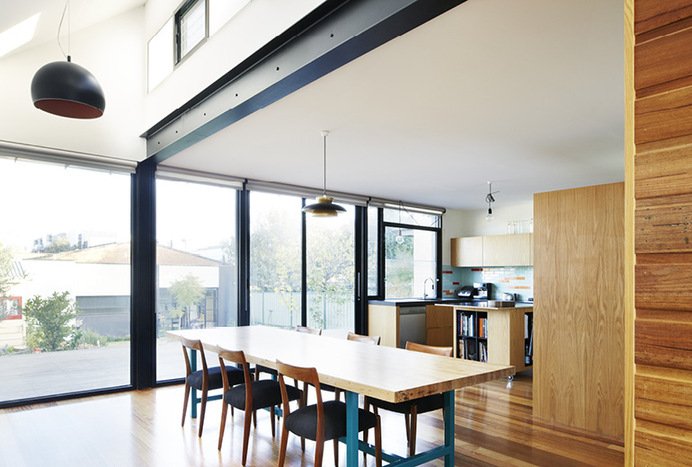
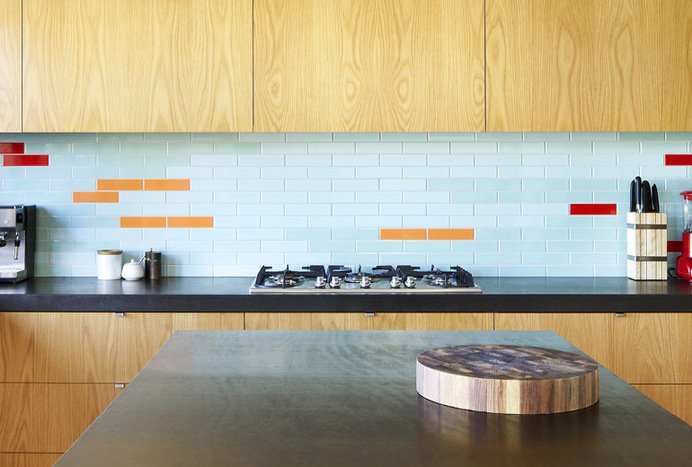
MORRIS BLACK HOUSE
Brunswick, 2011
The brick veneer home, an icon of Australian suburbia, a part of Melbourne’s cultural memory and identity, celebrated by artists, filmmakers and architects alike. The Morris Black House is an alteration and addition to such an icon, an existing 1960’s cream brick veneer house in the suburb of Brunswick. The strategy was to work with the existing external fabric of the house and reorganise and extend the internal spaces to meet the needs of the inhabitants. Where the new extension and additions are located, they are contrasted to the existing house in material use and form. This resulted in the new parts of the home being clearly defined, providing an eventful new entry into the home and new living spaces. The alteration and addition of this sixties brick veneer is a celebration of a suburban typology. The new addition draws inspiration from the surrounding neighbourhood fabric of Brunswick. Approaching and entering this once ordinary suburban home, is now an eventful, intriguing experience.

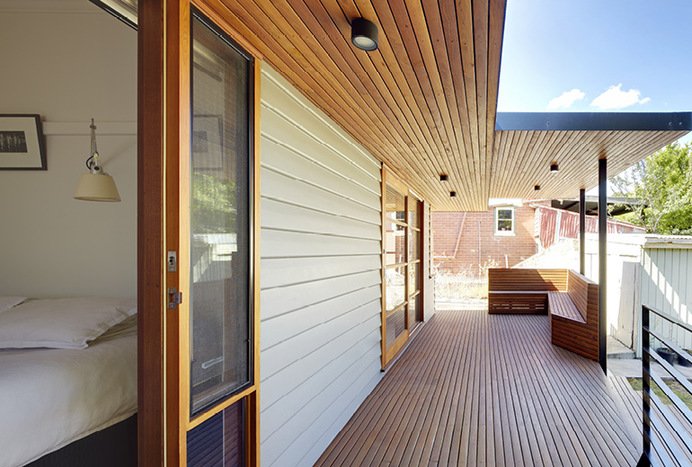
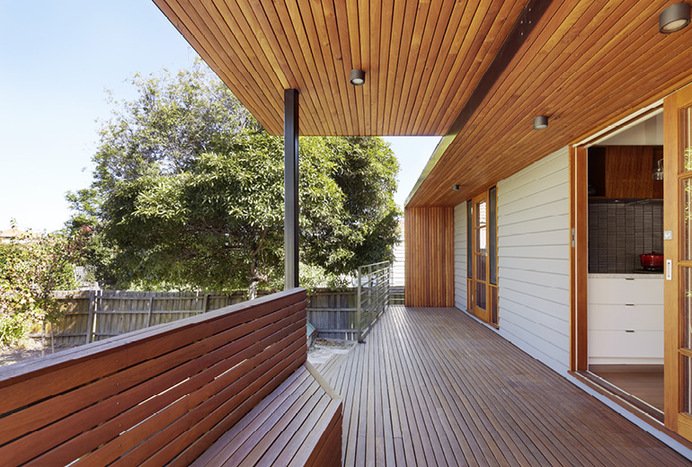
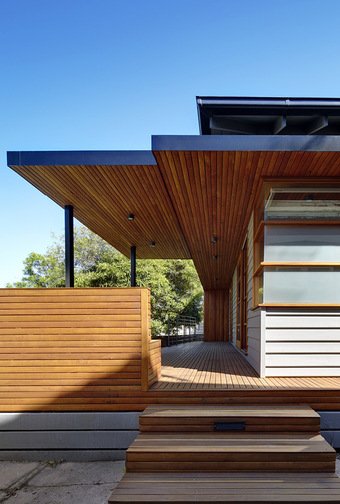
KATHERINE’S VERANDAH
Brunswick, 2011
‘Katherine’s Verandah’, reinterprets the traditional and iconic Australian verandah. Two striking sculptural timber elements have been carefully inserted under the existing eaves of a West Brunswick timber bungalow; a new timber entry porch that addresses the street, and a new timber verandah at the rear that creates a threshold space between the rear household rooms and the garden beyond. By implementing this strategy the West Brunswick bungalow has been extended and new external private living spaces created, all on a tight budget. The use of a Victorian Indigenous hardwood and radial cut timber, Southern Red Mahogany, is integral to the projects design intent. Reinforcing the idea of the verandah as a private enclosure and a space to engage with the outside, the timber provides a warm, tactile environment that wraps the spaces as flooring, walls, ceiling and seating. Combined carefully with new timber WRC windows and doors, the visual connection to the new interstitial spaces from the inside of the house is further enhanced
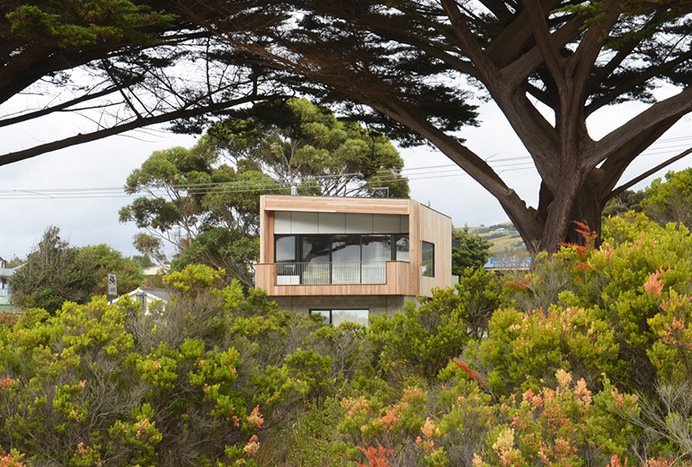
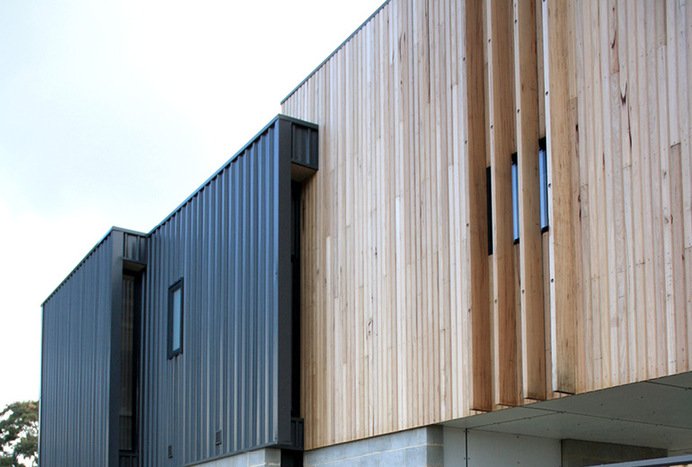

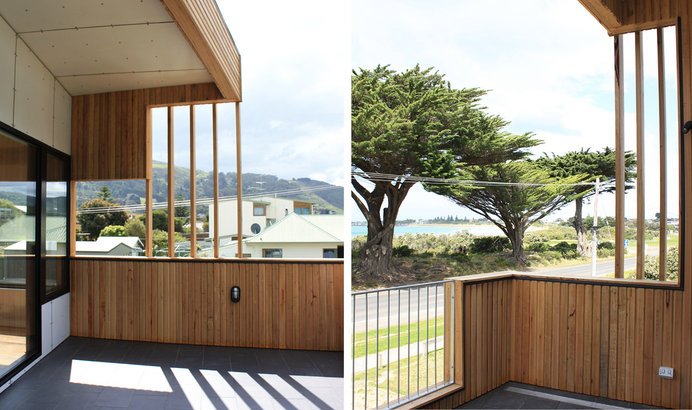
APOLLO BAY HOUSE
Apollo Bay, 2011
Flexibility, to meet the needs of several generations, informed the spatial arrangement for this family beach house. Located on the Great Ocean Road in the township of Apollo Bay, the house sits between its neighbours of cement sheet beach shacks and suburban brick homes. Robust form and materials were used to ensure longevity in the harsh coastal environment. A tight budget required an economy in material choices and spatial efficiency. The house is two storeys, with the upper level accessed via an external stair. The upper level includes a shared living space, balcony and the owner’s bedroom. The lower level is utilised in holiday periods when family and friends descend on the beach house. The lower front room next to the carport can be used as a rumpus room or bedroom, adapting as required. The carport area can be used as a protected gathering space, a rumpus room ‘spill out’ or BBQ area. Sustainable considerations have been addressed through orientation, material choices, water recycling and solar panels. Future indigenous landscaping will soften and enhance the site over time.


